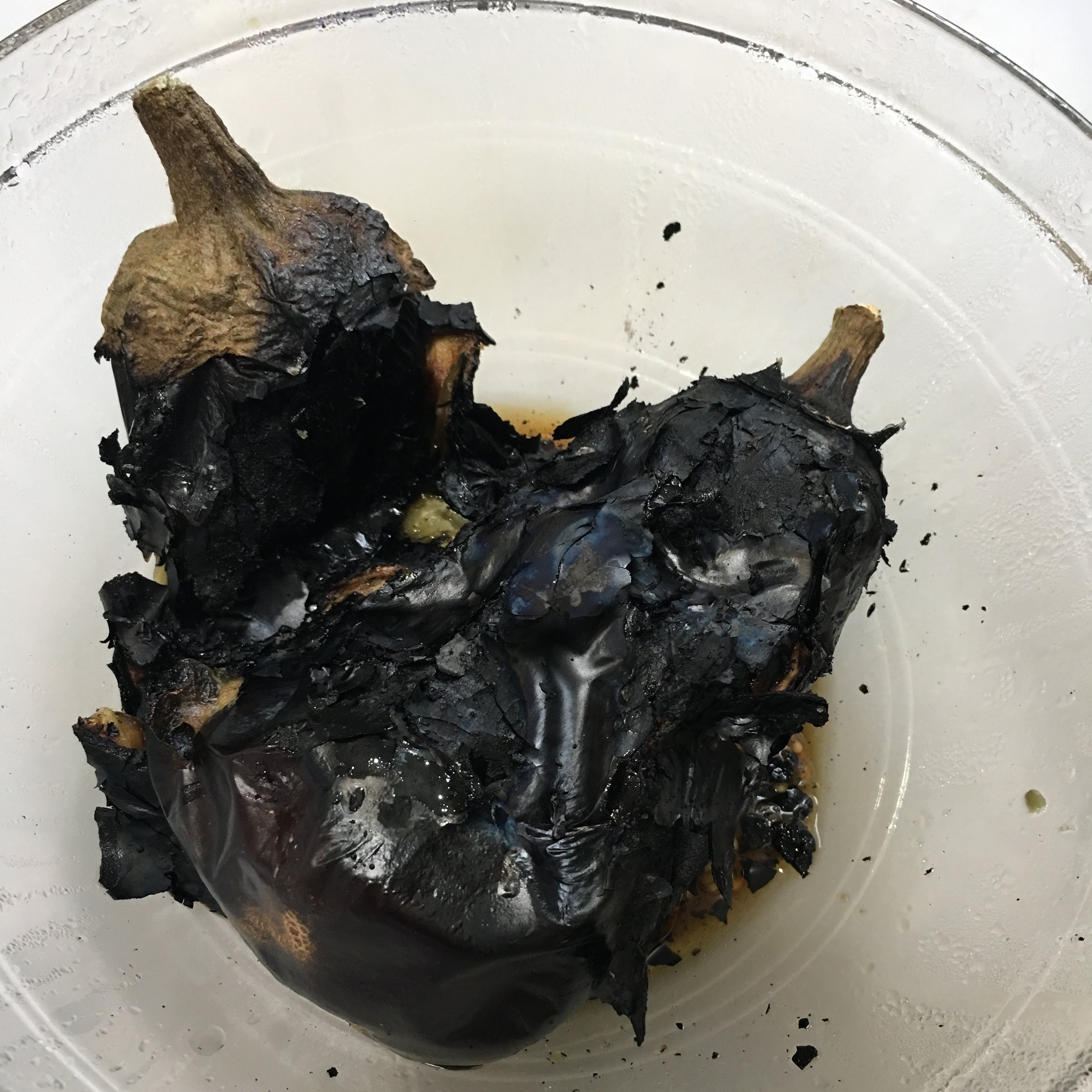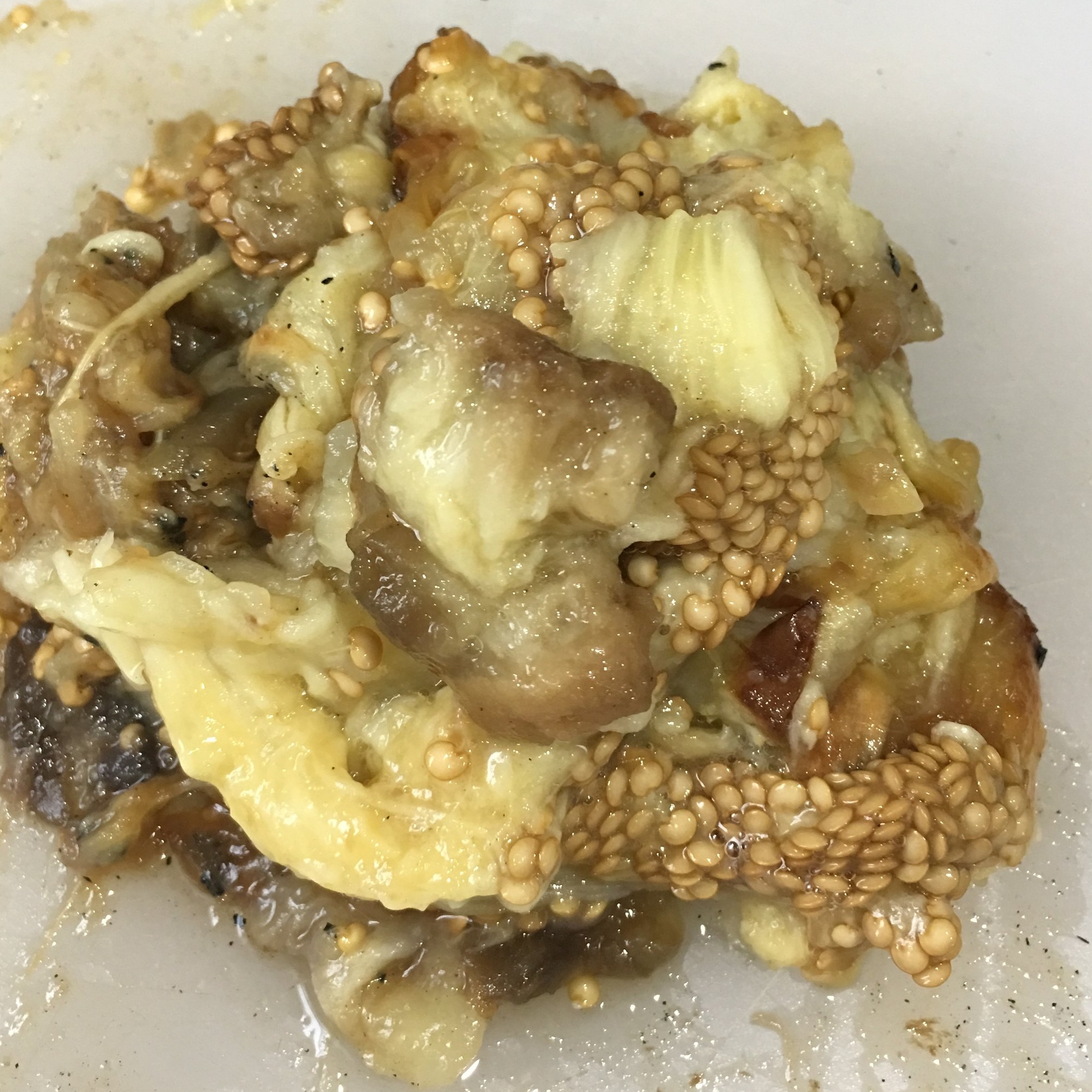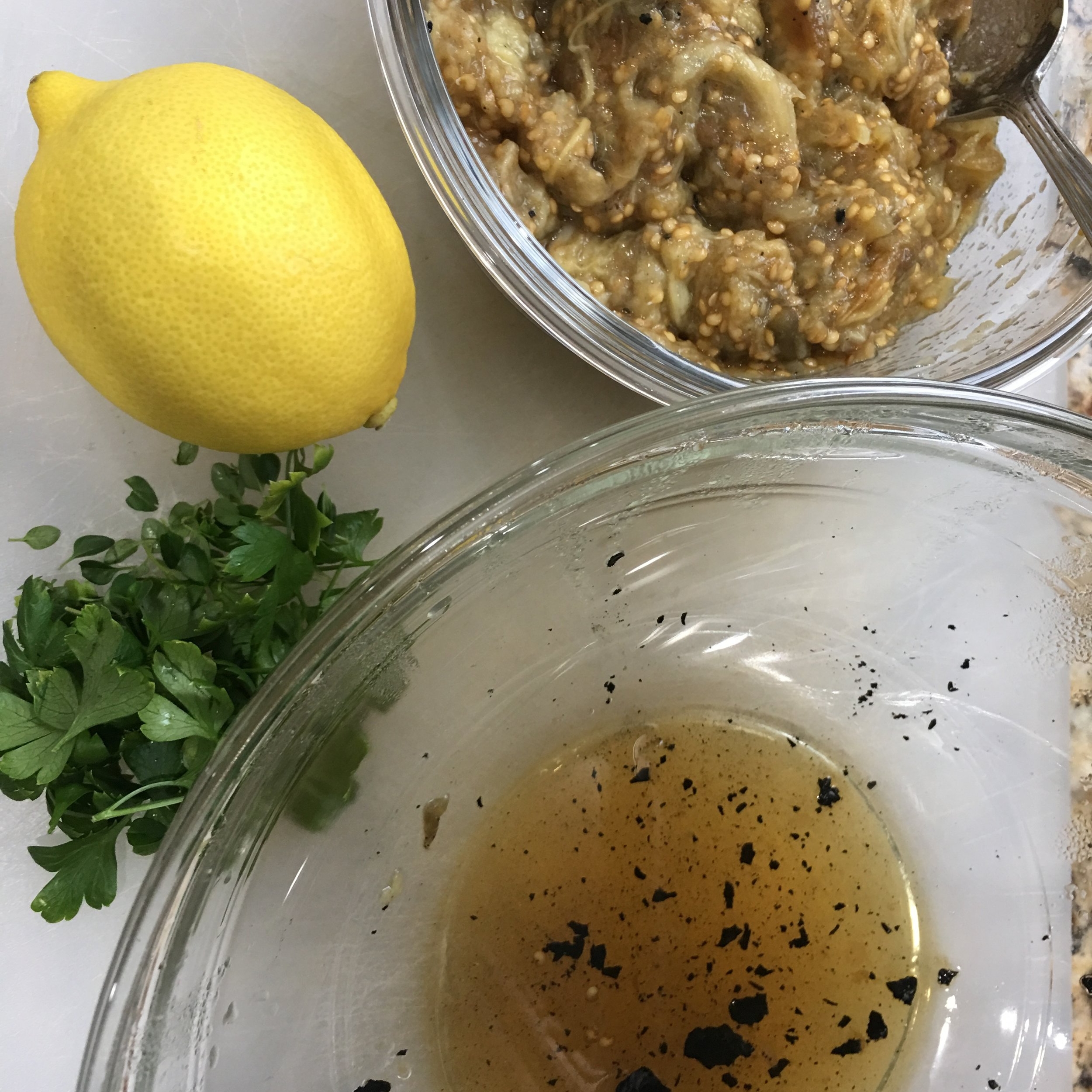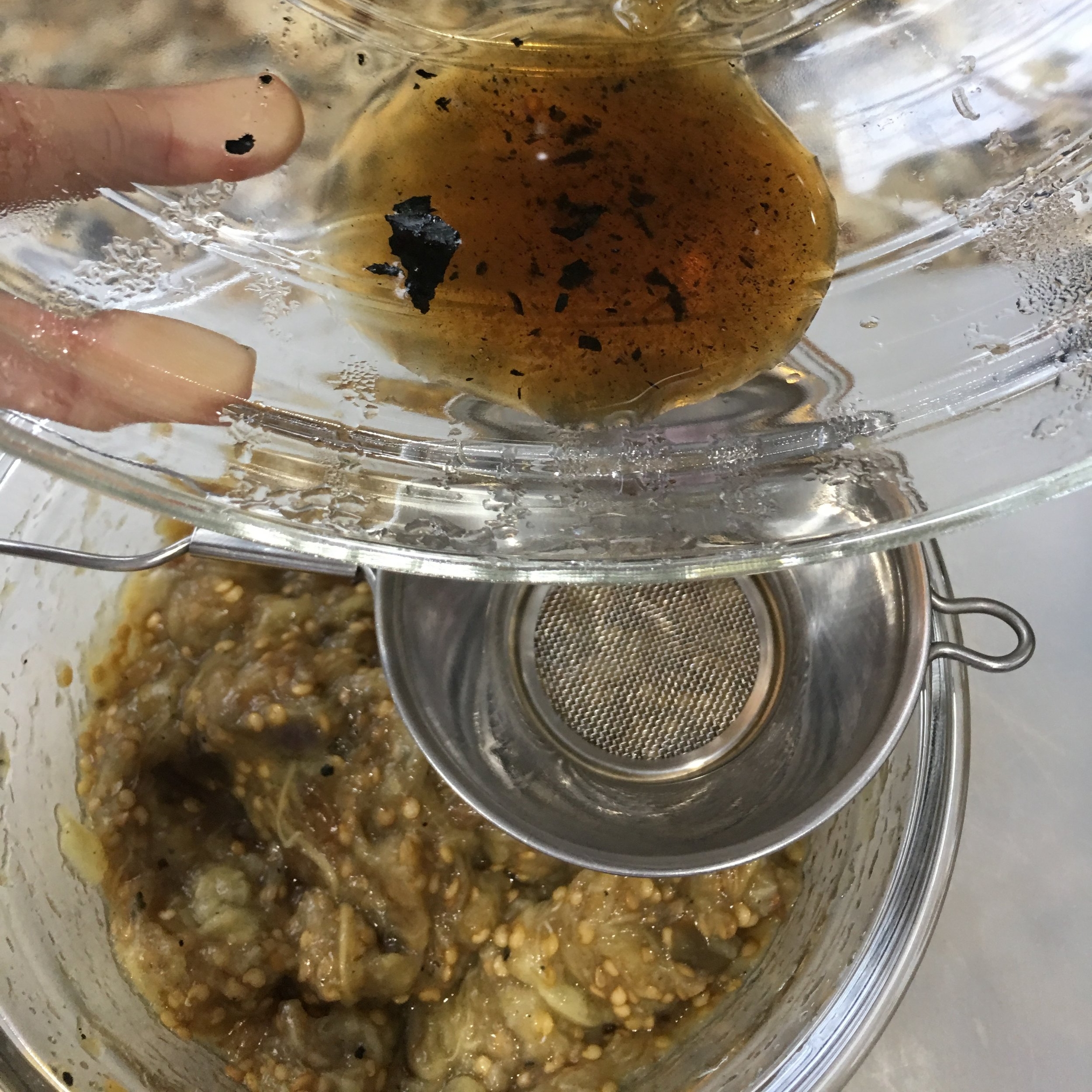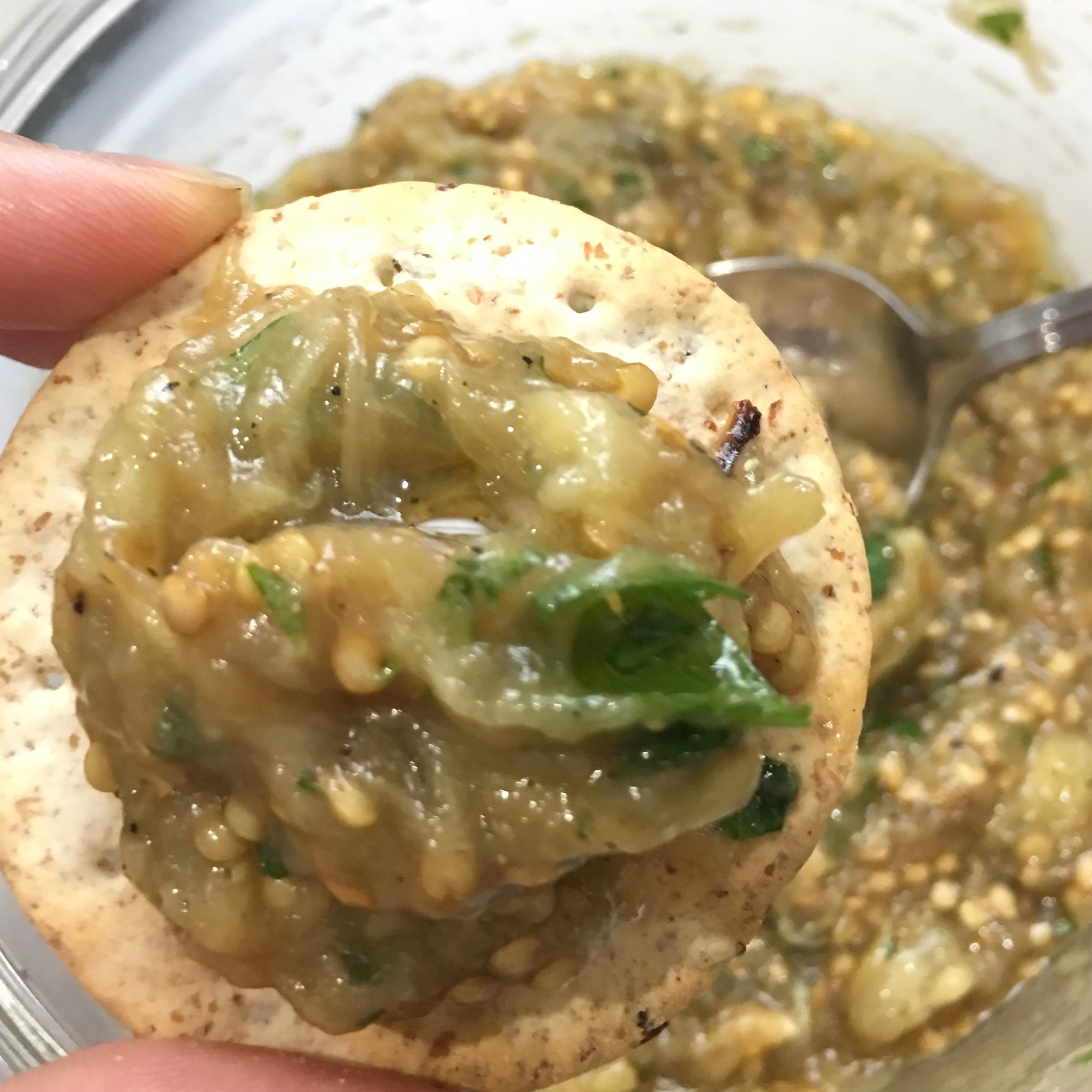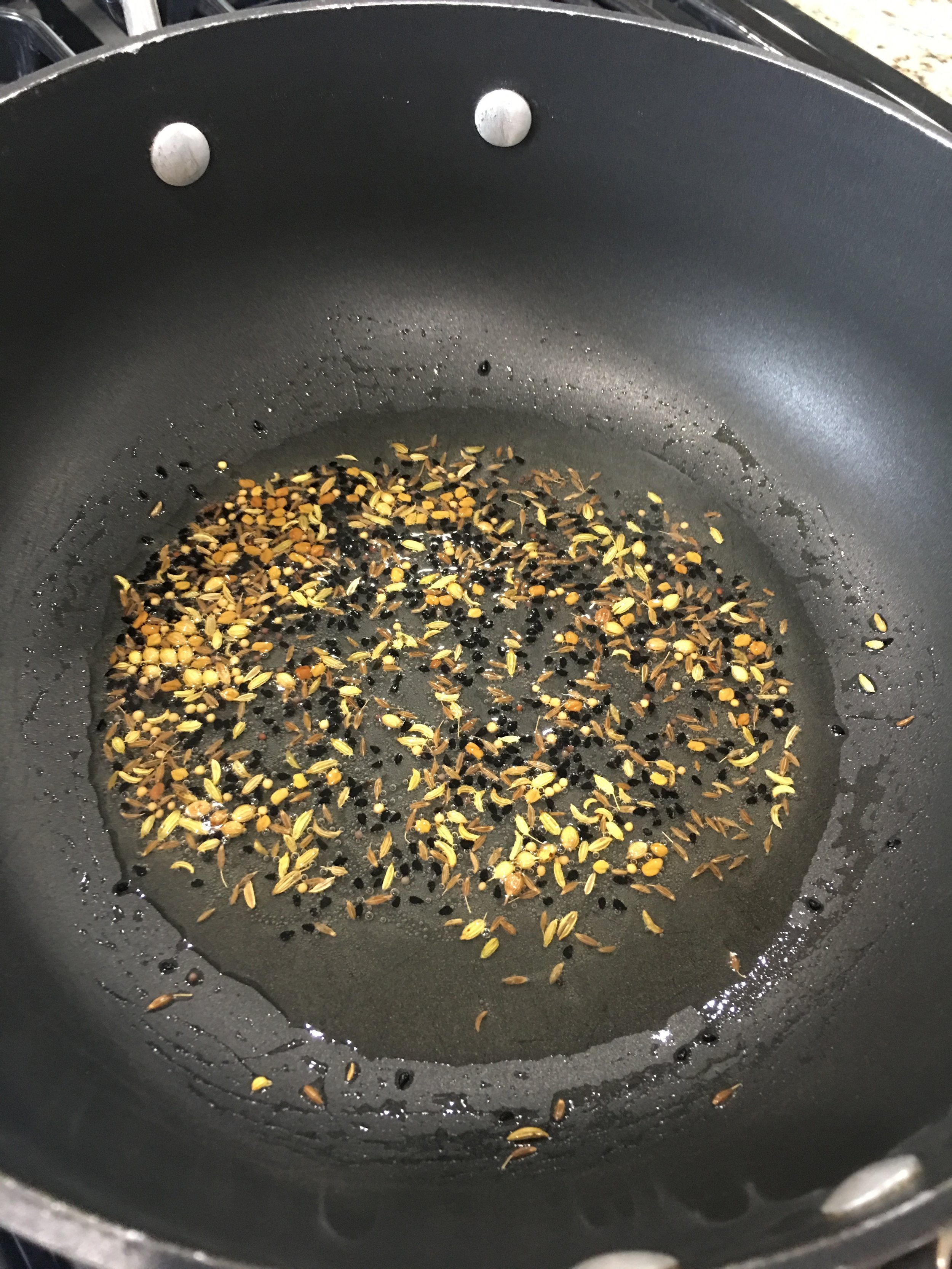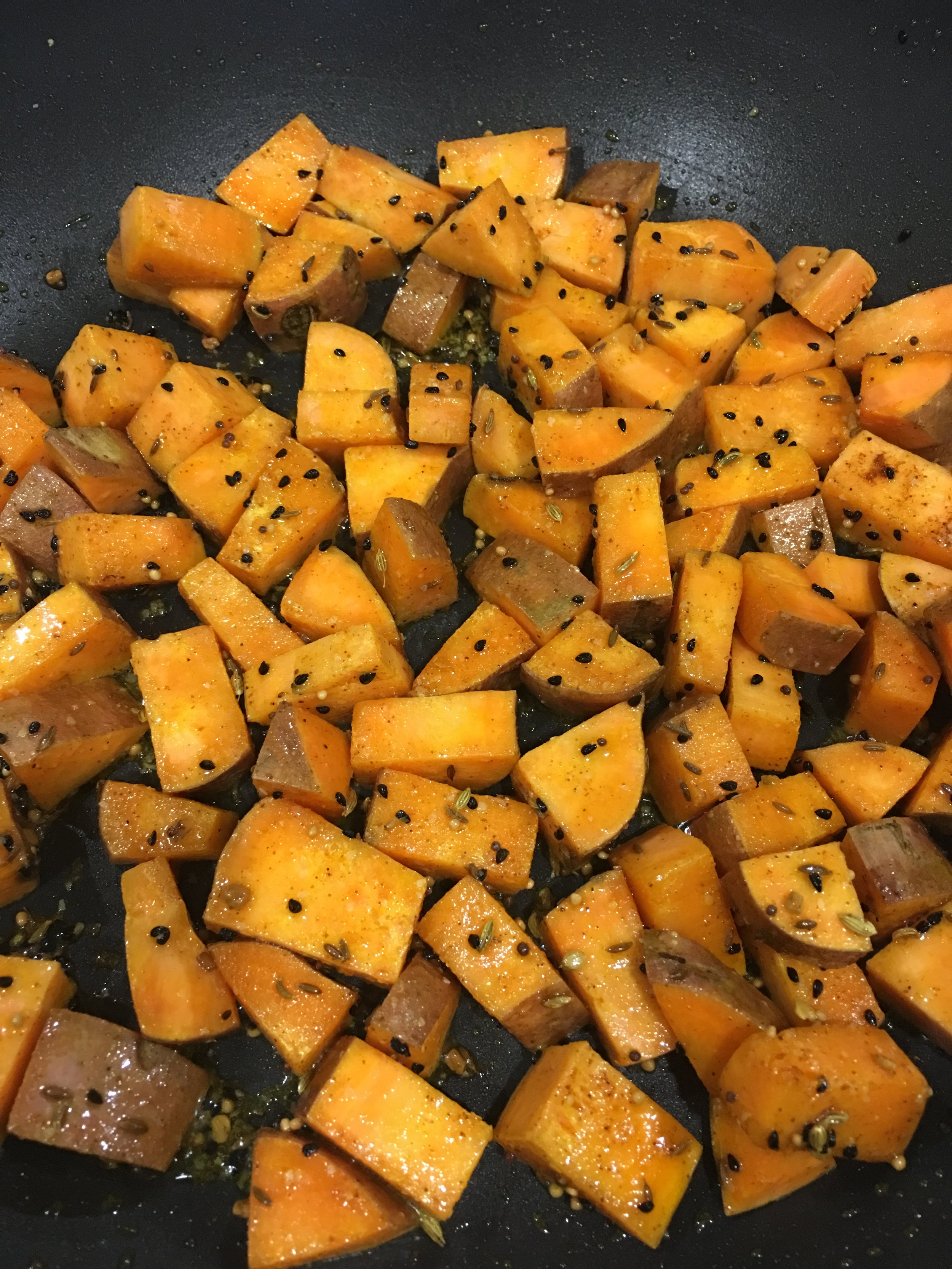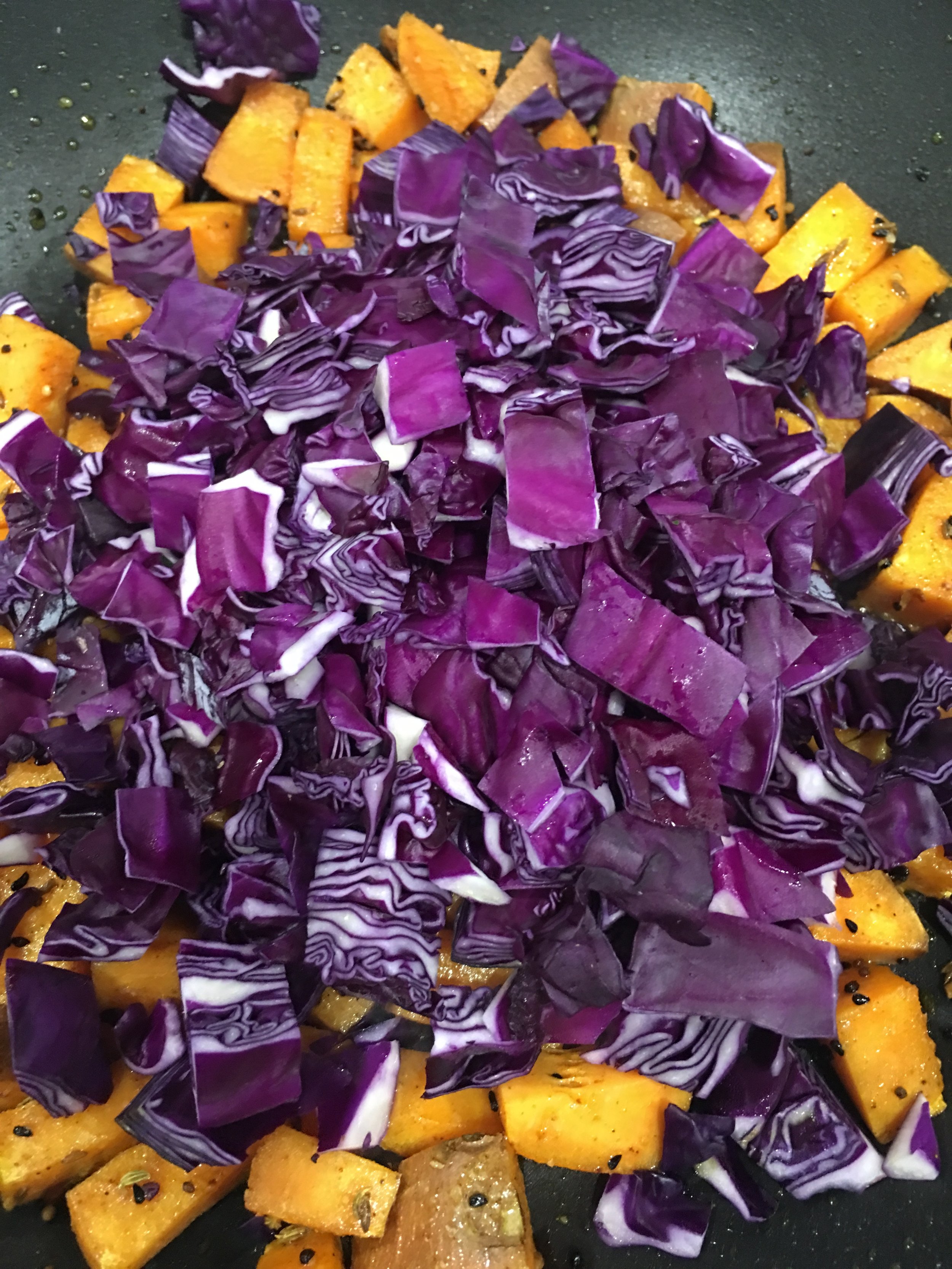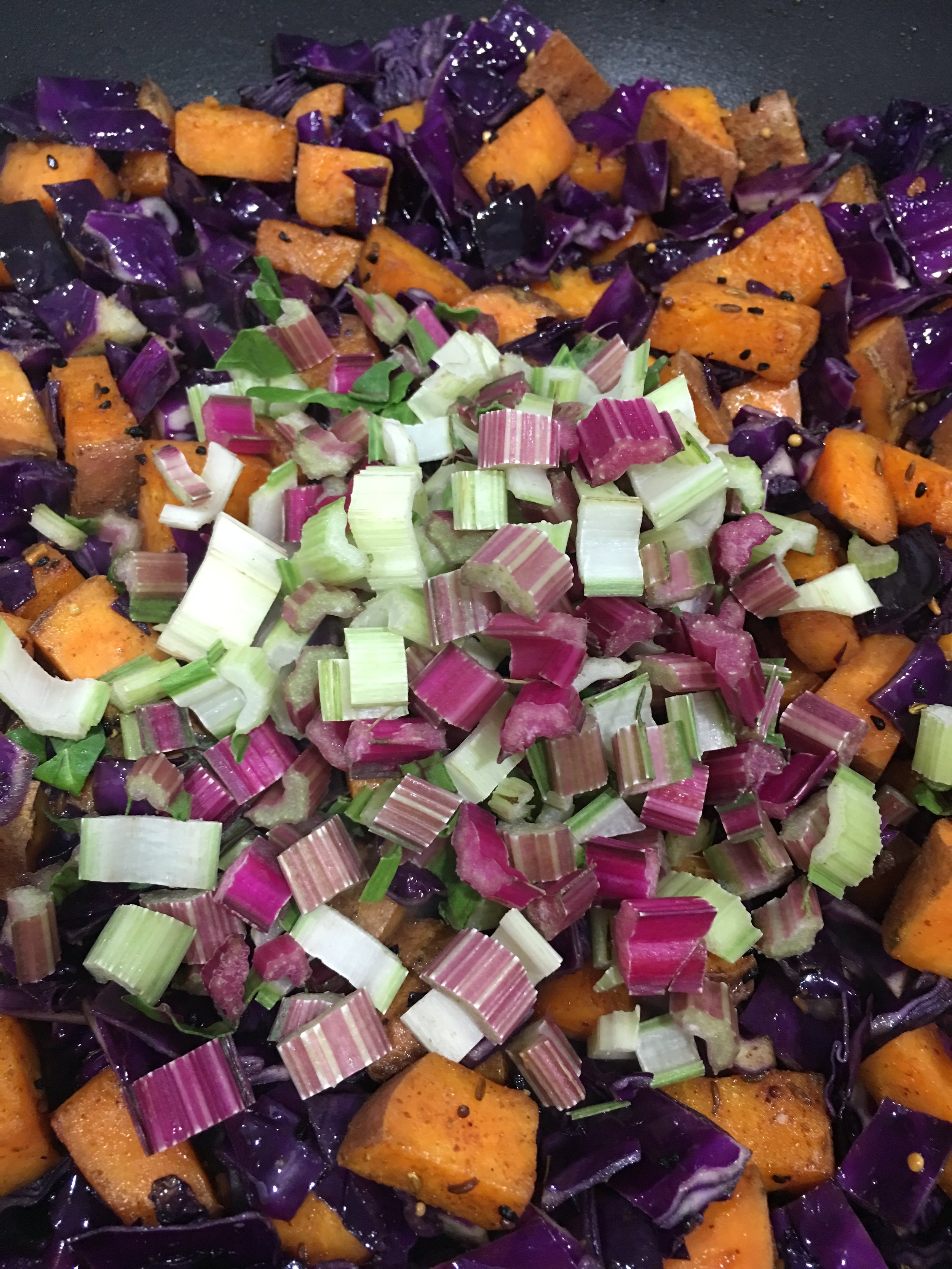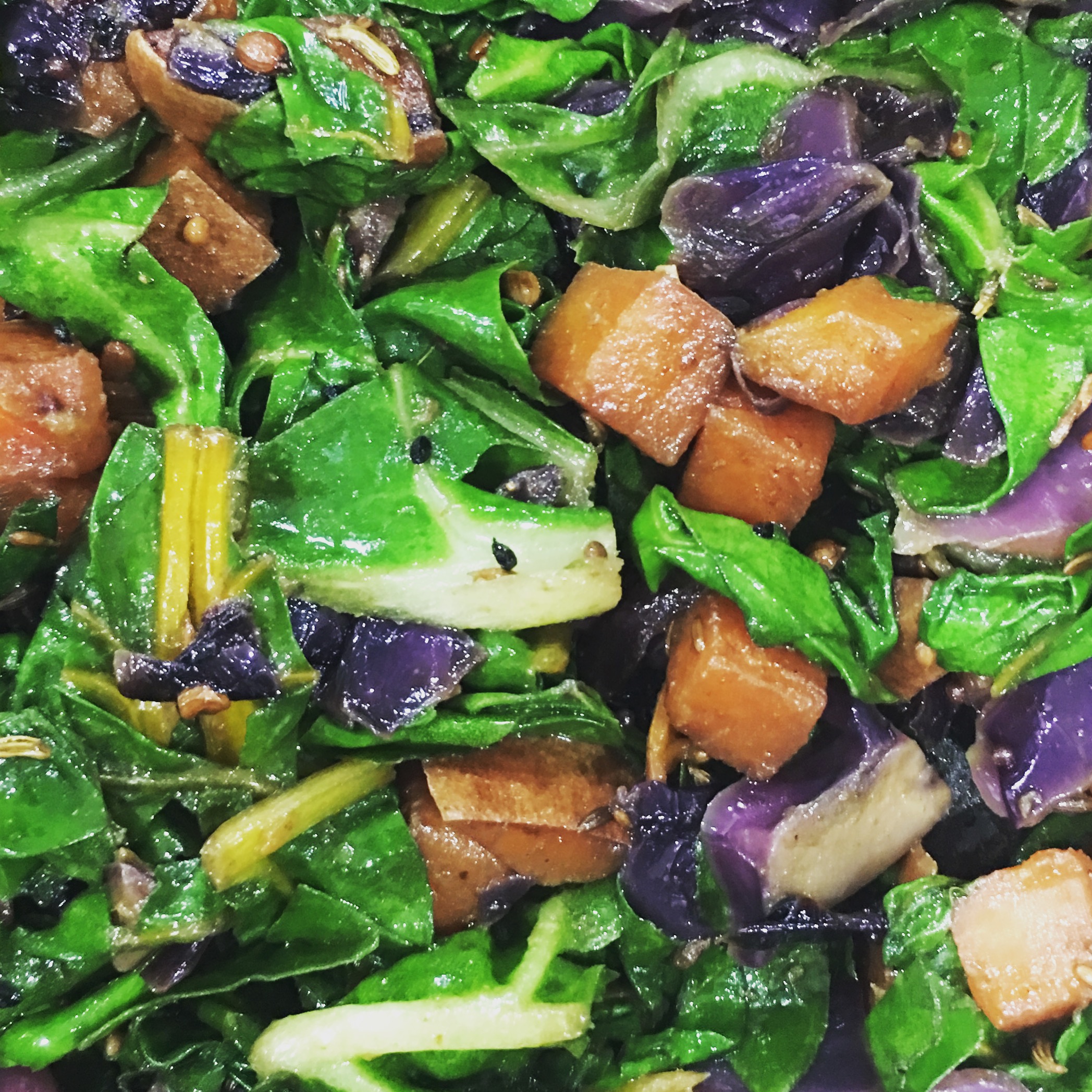I have loved roasted eggplant since I was a wee child. Both my grandmothers cooked eggplant over earthen or clay stoves with wood fires. The smoky, luscious eggplant was dressed with cilantro, green chilies and mustard oil. My maternal grandmother may have added sautéed onions and a few spices on occasion.
Roasted eggplant is beloved by many culinary traditions. Middle eastern dishes like babaganouj and Persian spiced eggplant are some of my favorites. The mediterranean and the near and far East have their own versions. I've described the simple method favored in Bengal. In other parts of India, tomatoes, spices and garlic are added with amazing results and complex tastes.
I demonstrated this dish at the farmers' market a few summer ago. I don't usually cook it at home as my husband doesn't prefer (his code for 'I really don't like') eggplant. He's tried it and just doesn't like it. I've always wondered if he'd feel differently if we called it aubergine, which is far more sophisticated and appealing.
Last weekend, I was in line a produce vendor at the farmer' market and the two women in front of me were talking about eggplant. One said it looked great, but she didn't know what to do with it. So I offered up this technique in which you can take the flavor profile into any direction that you prefer. The roasting takes a little time and can be a bit messy if done over a gas flame (lining your stove with foil may help), but it can also be done in a broiler with the eggplants cut in half and laid with the cut side down so the outsides char.
The smoky, umami liquid that pools when you allow the eggplant to cool in a bowl is too delicious to toss; strain it into the pulp. Waste not want not.
I have dressed this with parsley, mother of thyme (a little less intense than regular thyme), gray salt, lemon and olive oil. I added a teaspoon of mustard oil in honor of my grandmothers--the pungent flavor blends perfectly with the smoky sweetness of the eggplant. You can add other herbs, garlic, onion, spice mixes including zatar, ras el hanout, herbs de Provence, garam masala, cumin, Thai curry paste, Chinese five spice, miso, tahini or something from wherever your imagination and inspiration lead you.
Large, globe eggplants work best here. Medium rounded eggplants will also do. One large black beauty eggplant yields about a cup of flesh. You can roast an army of eggplants, or treat this like the precious, special dish that it is. Eat less; savor the flavors and the moment.
In terms of nutrition, eggplants are a rich,low calorie source of fiber, providing vitamins C, B6, niacin, Folate and also minerals such as potassium and magnesium.
You should really try this dish. Who knows. You may make an aubergine lover of someone.
RECIPE: Roasted Eggplant with parsley, mother of thyme, lemon and olive oil
INGREDIENTS:
- 2 large black beauty or other globe eggplants
- 1 teaspoons extra virgin olive oil
- 1 table spoon chopped fresh parsley
- 1 teaspoon mother of thyme
- 1/4 teaspoon gray salt (more to taste)
- 2 teaspoon lemon juice (more to taste depending on the acidity of your lemon)
- Strained juice of the eggplants
- 1 teaspoon mustard oil (optional)
PROCESS
- Roast the eggplants until the skin is charred all over and the flesh is very soft.
- Use spoons or knives to break down the flesh.
- Add all remaining ingredients and mix well.
- Season to taste.
- Enjoy.
Makes 2 cups




